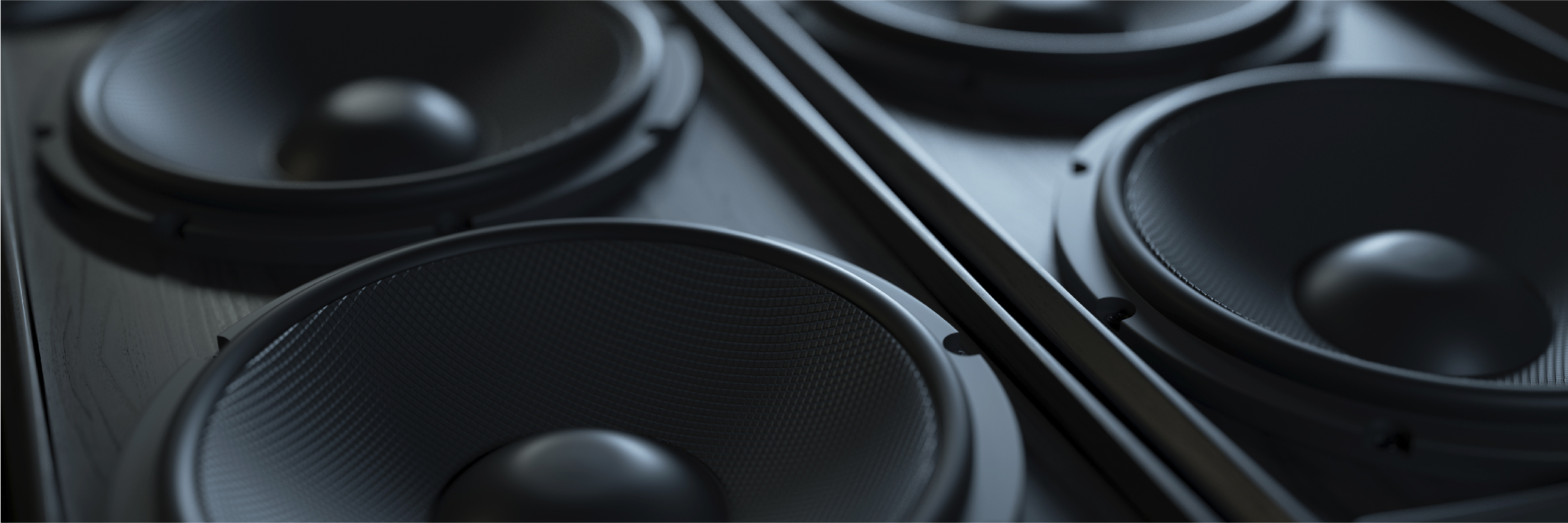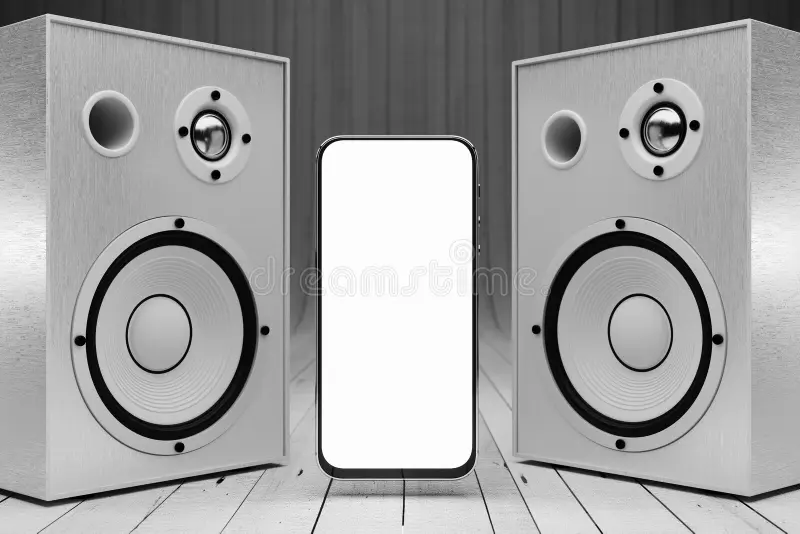Blog
How to Fix Common Issues with Your Speakers
Speakers are essential for delivering high-quality sound, whether you’re listening to music, watching movies, or gaming. However, like any piece of technology, they can encounter issues over time. From distorted sound to complete failure, speaker problems can be frustrating, but many common issues are simple to fix. In this guide, we’ll walk you through how to troubleshoot and resolve the most frequent speaker problems.

1. No Sound or Low Volume
One of the most common speaker issues is no sound or very low sound output. Before assuming your speakers are broken, try these troubleshooting steps:
Check the Connections
- Wired Speakers: Make sure the speaker cables are securely connected to both the speaker and the audio source (such as your computer, receiver, or phone). If you’re using an aux cable, ensure it’s fully plugged in.
- Bluetooth Speakers: Verify that your Bluetooth device is paired correctly and within range of the speaker. Ensure the speaker is turned on and not in pairing mode.
Check the Audio Source
- Sometimes, the issue is with the device you’re using rather than the speakers. Make sure the volume on your audio source (e.g., smartphone, computer, or TV) is turned up and not muted. You can also test the speaker with a different device to rule out a problem with your source.
Inspect the Speaker’s Power Supply
- If you’re using powered (active) speakers, ensure they’re plugged into a functioning power outlet. If the speaker uses a battery, check if the battery is charged.
2. Distorted or Muffled Sound
If your speakers are producing distorted or muffled sound, it could be due to a variety of reasons, including interference, poor connection, or damaged components. Try the following fixes:
Check the Audio Source
- Sometimes distorted sound can be due to a low-quality or damaged audio file. Try playing a different song or audio clip to see if the issue persists. If you’re using a smartphone or computer, make sure no apps or settings are causing interference.
Inspect the Speaker Placement
- Speakers that are placed too close to walls or in corners may produce unwanted distortion or muddiness. Make sure your speakers are positioned optimally, with enough space around them for the sound to breathe. For bass-heavy speakers, avoid placing them in corners, as this can accentuate the bass too much.
Check for Interference
- Wireless speakers, like Bluetooth or Wi-Fi speakers, can suffer from interference. Ensure that your wireless speakers are not near other electronic devices that may be causing interference, such as routers, microwaves, or large metal objects.
Adjust Equalizer Settings
- If your audio source has an equalizer (EQ) setting, check if it’s set to extreme levels. Excessive boosting of bass or treble can cause distortion. Resetting the EQ to a neutral setting may help restore balanced sound.
3. One Speaker Not Working (Stereo Sound Issues)
If one of your speakers isn’t working in a stereo setup, it’s essential to identify whether the issue is with the speaker itself, the wiring, or the audio source.
Check the Wiring
- For wired setups, ensure that the cables are connected securely to the speakers and the receiver or audio device. A loose or frayed wire can cause a single speaker to stop working. Try swapping the speaker cables to see if the problem follows the cable or stays with the speaker.
Check the Audio Source
- Test the sound by switching to mono mode if your device allows it. This helps rule out any issues with stereo channels. If the problem persists, try using a different device to see if the issue is with the original source.
Test with Different Speakers
- If possible, connect a different speaker to the same output. This can help determine whether the issue is with the speaker or the audio device. If the new speaker works, the original speaker may be damaged and require repair or replacement.

4. Buzzing, Humming, or Static Noise
Humming, buzzing, or static noises often occur due to electrical interference, grounding issues, or damaged cables.
Check for Grounding Issues
- If you’re using wired speakers with a home theater system, check for any grounding problems. Electrical grounding issues can cause a humming sound. You may need to connect your audio equipment to a different power source or use a ground loop isolator to reduce the hum.
Inspect the Cables
- Damaged or poorly shielded cables can cause buzzing or static noises. Try swapping out the speaker cables for new ones and see if the noise goes away. Make sure the cables are securely connected, with no exposed wires.
Move Electronics Away from the Speakers
- Electronic devices such as routers, cell phones, or microwaves can interfere with speaker performance. If you’re using wireless speakers, try moving these devices away from the speakers to reduce interference.
5. Low Bass or No Bass
Bass problems are common, particularly with smaller or poorly positioned speakers. To fix issues with bass response, follow these troubleshooting steps:
Check the Speaker Placement
- For optimal bass, place your speakers away from walls and corners. If your speakers are too close to a wall, the bass may be exaggerated or muffled. Experiment with different placements to find the sweet spot.
Adjust the Subwoofer
- If your system includes a subwoofer, make sure it is properly connected and its settings are adjusted correctly. You may need to increase the subwoofer’s volume or adjust the crossover frequency to ensure the bass is prominent without overpowering the rest of the sound.
Adjust the EQ Settings
- Some audio sources have an equalizer that lets you adjust the bass level. If the bass is too weak, try boosting the low-frequency range on your EQ settings.
6. Speaker Keeps Disconnecting (Wireless Issues)
Wireless speakers, particularly Bluetooth or Wi-Fi speakers, can often experience connection drops or interruptions. Here’s how to troubleshoot these issues:
Check the Signal Range
- Ensure that the speaker and your audio source are within the effective range for Bluetooth or Wi-Fi. If you’re too far away from the speaker or there are too many obstacles between the speaker and the source, the connection may drop. Move closer to the speaker and see if the issue resolves.
Re-pair Bluetooth Devices
- If you’re using Bluetooth speakers, unpair the devices and re-pair them. Sometimes the connection can become unstable due to interference or a software glitch. On your audio device, go to Bluetooth settings, forget the speaker, and pair it again.
Update Firmware and Drivers
- For Wi-Fi or smart speakers, make sure that both your speaker and audio source have the latest software or firmware updates. Many manufacturers release updates to fix bugs and improve connectivity.
7. Speaker Won’t Turn On
If your speaker isn’t turning on at all, follow these steps to troubleshoot:
Check the Power Supply
- If you’re using a powered speaker, check if the power cord is securely plugged in. For battery-powered speakers, ensure the battery is charged. If the battery is dead, try charging it for a while before turning it back on.
Reset the Speaker
- If your speaker still doesn’t turn on, you may need to perform a reset. Consult your speaker’s user manual for instructions on how to reset the speaker to factory settings. A reset can often clear any software glitches or settings that may be causing issues.

Conclusion
Speaker issues can be frustrating, but many of them are easy to fix with a little troubleshooting. Whether it’s a simple connection issue, a problem with your audio source, or a more technical fault with the speakers themselves, the steps outlined above can help you resolve common problems. Regular maintenance and proper care, such as securing cables and keeping speakers away from interference, can also help prevent future issues. By following these tips, you’ll be able to enjoy uninterrupted, high-quality sound in no time.

